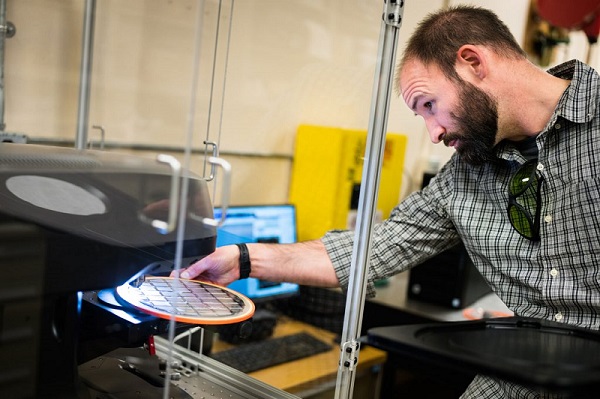ALBUQUERQUE, N.M., March 29, 2023 — Sandia National Laboratories has partnered with Albuquerque, N.M.-based startup Advanced hCMOS Systems to commercialize ultrafast x-ray imaging technology invented at the labs and used extensively in fusion research. The collaboration aims to hasten the move toward limitless clean energy by accelerating such research, while potentially influencing many other areas of R&D.
Sandia issued its first commercial license for the ultrafast x-ray imager — what it said is the fastest multiframe digital x-ray camera in the world — to Advanced hCMOS Systems in July 2022. In August, Sandia and Advanced hCMOS Systems, which was founded by former Sandia and Lawrence Livermore National Laboratory employees, started a one-year collaboration to develop a roadmap for redesigning the sensors for new applications.
As part of the collaboration, Sandia is testing how well its sensors capture and amplify forms of light besides x-rays, such as visible light.

Sandia National Laboratories’ Quinn Looker inspects sensors used in the ultrafast x-ray imaging camera. Courtesy of Craig Fritz.
“We’ve been testing our old devices in this new mode of operation and were able to demonstrate that they do actually exhibit gain in the right region that we’re looking for for this project,” said engineer Rex Kay, Sandia’s lead on the collaboration.
Sandia’s decision to commercialize the technology comes at a time when demand for the sensors is pushing labs’ limit to produce them. Each batch that Sandia produces, which usually consists of around 20 sensors, takes six to nine months to process. Much of the time-intensive work takes place at a semiconductor fab in Sandia’s MESA complex, with some steps outsourced to private companies. Though it’s possible to start multiple batches throughout the year, the time it takes to finish them depends on the availability of Sandia’s contracted manufacturers and machinery at the fab. MESA’s primary purpose is to produce microelectronics for the U.S. nuclear stockpile, while serving as a research and development facility for a host of other projects.

“If all the production and ordering parts could be taken over by a small company, Sandia as a federally funded research and development center would go back to its primary core competency, which is research and development of new, advanced, cutting-edge capabilities,” said Tony Colombo, Sandia’s manager of camera production. This includes building variations of the cameras with new features and better performance.
Liam Claus, co-founder of Advanced hCMOS Systems, said his company will use licensed Sandia patents to create its own product line of ultrahigh-speed cameras. Claus and his fellow company co-founders started Advanced hCMOS Systems through a program at the labs called Entrepreneurial Separation for Technology Transfer.
The avenues of research that the collaboration intends to promote include those that target materials science. For example, Claus said, research on glass is pertinent to the collaboration. How the material fractures, with the knowledge that glass fractures can propagate at very high speed, is critical information, he said.
Claus and his fellow co-founders Marcos Sanchez and Matthew Dayton plan to make the developed cameras available to new markets, including organizations developing other advanced materials, studying astrophysics, or designing lasers, all of which could benefit from high-speed imaging, they said.
Sandia is mandated by the Department of Energy to move its technology to the marketplace for the benefit of the U.S. economy. Given the labs’ national security focus, government is the primary customer for many licensees, but Sandia technologies also find use in the industrial and consumer markets.
The ongoing project is funded by the TRGR Technology Readiness Initiative, formerly the Technology Readiness Gross Receipts Tax Credit program, a partnership between the state of New Mexico, Sandia, and Los Alamos National Laboratory.